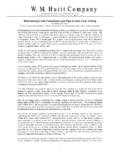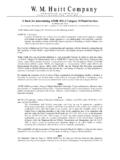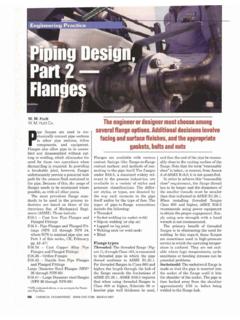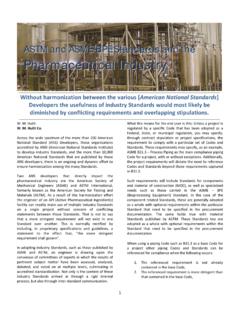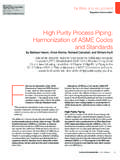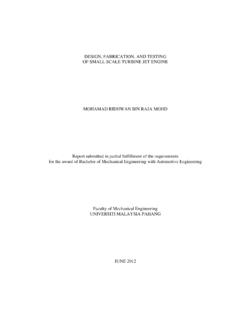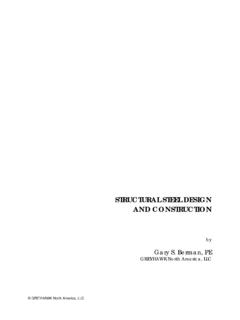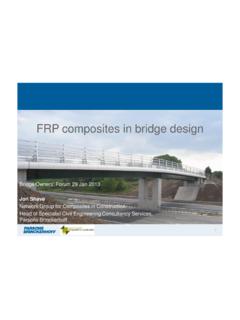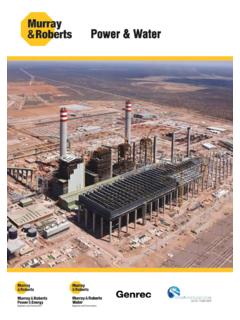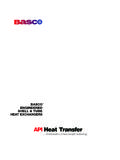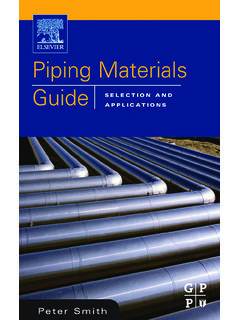Transcription of Piping Design Part 2: Code, Design and Fabrication
1 As published in the June and July 2007 issues of Chemical Engineering Magazine There is not a reason sufficiently good enough not to comply with appropriate industry Standards and Codes. W. M. (Bill) Huitt W. M. Huitt request was put to me a few years back asking if I would respond in writing to the question, Why do we, as a company, need to comply with a Piping Code? The question was in regard to the building of industrial facilities, and was in preparation for a meeting that was about to take place for which the main topic was going to be the issue of Code compliance. If you considered the question while reading it you may have noticed that there is, although unintentional, a trick to it.
2 Code, by definition is law with statutory force. Therefore the reason for complying with a Code is because you literally have to, or be penalized for non-compliance. The question actually intended was, why comply with or adopt a Piping consensus standard? When a question like the one above is phrased as it is it supports my contention that many people, referring to engineers and designers in our case, do not fully understand the difference between a Code and a Standard. And it doesn t help matters when some Standards are published as a Code, and some Codes are published as a Standard. This is certainly nothing to get excited about, but it is something worth pointing out.
3 My take on the reason for the misunderstanding of these two closely related terms, Standard and Code, is that they get bounced around so often in the same context that designers and engineers simply begin interchanging the two terms without much consideration for their different meanings. I m going to explain the difference between a Standard and a Code, but before I do, here s the written response I gave to the above question: Consensus Standards such as those published by ASME, ANSI, API, NFPA, ASTM, International Plumbing Code and others are not mandatory in and of themselves.
4 However, federal, state, city and other local Codes are mandatory. In these municipal Codes you will find regulations that establish various requirements taken in whole, or in part from the Standards published by the above listed organizations, and others, as legally binding requirements. These Standards, as adopted, then become Code, which is enforceable by law. When not addressed on a municipal level, but included in corporate specifications, the Standard becomes a legal Code on a contractual basis. To comply with these Codes, irrespective of government regulations or corporate requirements, doesn't cost the builder any more than if they didn't comply.
5 It does, however, cost more to fabricate and install Piping systems that have a high degree of integrity as opposed to a system that doesn't. By hiring non-certified welders and plumbers, by-passing inspections, examinations and testing, using material that may potentially not withstand service pressures and temperatures, and supporting this type of system with potentially inadequate supports is less costly but there's too much at risk. I don't think anyone in good conscience would Piping Design part 2: Code, Design and Fabrication 2 intentionally attempt to do something like that in order to save money, but then again the world is full of unscrupulous individuals and corporations.
6 If anyone intending on fabricating and installing a Piping system plans to: 1. Use listed material, 2. Specify material that meets the requirements for fluid service, pressure and temperature, 3. Inspect the material for MOC, size and rating, 4. Use certified welders and plumbers, 5. Inspect welds and brazing, 6. Adequately support the pipe, 7. Test the pipe for tightness; Then they are essentially complying with Code. The Code simply explains how to do this in a formal, well thought-out manner. There is not a reason sufficiently good enough not to comply with appropriate industry Standards and Codes. If there was a fee involved for compliance this might be a stimulus for debate.
7 But there is no fee, and there is usually just too much at stake. Even with utility systems in an admin building or an institutional facility, the potential damage from a ruptured pipeline, or a slow leak at an untested joint could easily overshadow any savings gained in non-compliance. That's without considering the safety risk to personnel. The first thing that someone should do, if they are considering to do otherwise, is check local and state Code. They may find regulations that require adherence to ASME, the International Plumbing Code or some of the other consensus Standards.
8 If not already included, this should be a requirement within any company s specifications. Just a bit of trivia: ASME published the first edition of the Boiler and Pressure Vessel Code in 1914-15. Prior to creation of the Code, and what played a large part in instigating its creation, was that between 1870 and 1910 approximately 14,000 boilers had exploded. Some were devastating to both people and property. Those numbers fell off drastically as the Code was adopted. Uniformity and regulation does have its place. Piping CODE In a Piping facility, defined here as an industrial facility requiring a significant amount (apply your own order of magnitude here) of pipe, the three key factors in its development are the governing Code, the Design (includes specifications and engineering), and pipe Fabrication (includes installation).
9 These are the three topics we will discuss on a broad, but limited basis in this article. Like the seatbelt law Code compliance is not just the law, it makes good sense. A professional Consensus Standard is, very simply put, a Code waiting to be adopted. Take the ASME Boiler and Pressure Vessel Code (BPVC), since its first publication in 1915 it has been adopted by 49 states, all the provinces of Canada, and accepted by regulatory authorities in over 80 countries. On May 18, 2005 it was finally adopted by the 50th state, South Carolina. And this doesn t mean the BPVC is adopted in its entirety.
10 A state, or corporation for that matter, can adopt a single section or multiple Sections of the BPVC, or they can adopt it in its entirety. Until South Carolina adopted the BPVC it was actually no more than a Standard in that state and only required compliance when stipulated in a specification. However, in all honesty you would not get a US boiler or pressure vessel manufacturer to by-pass Code compliance. That is, unless you wanted to pay their potential attorneys fees. With regard to Code compliance, the question I get quite often is, How do I determine which Piping Code, or Standard, I should comply with for my particular project?
